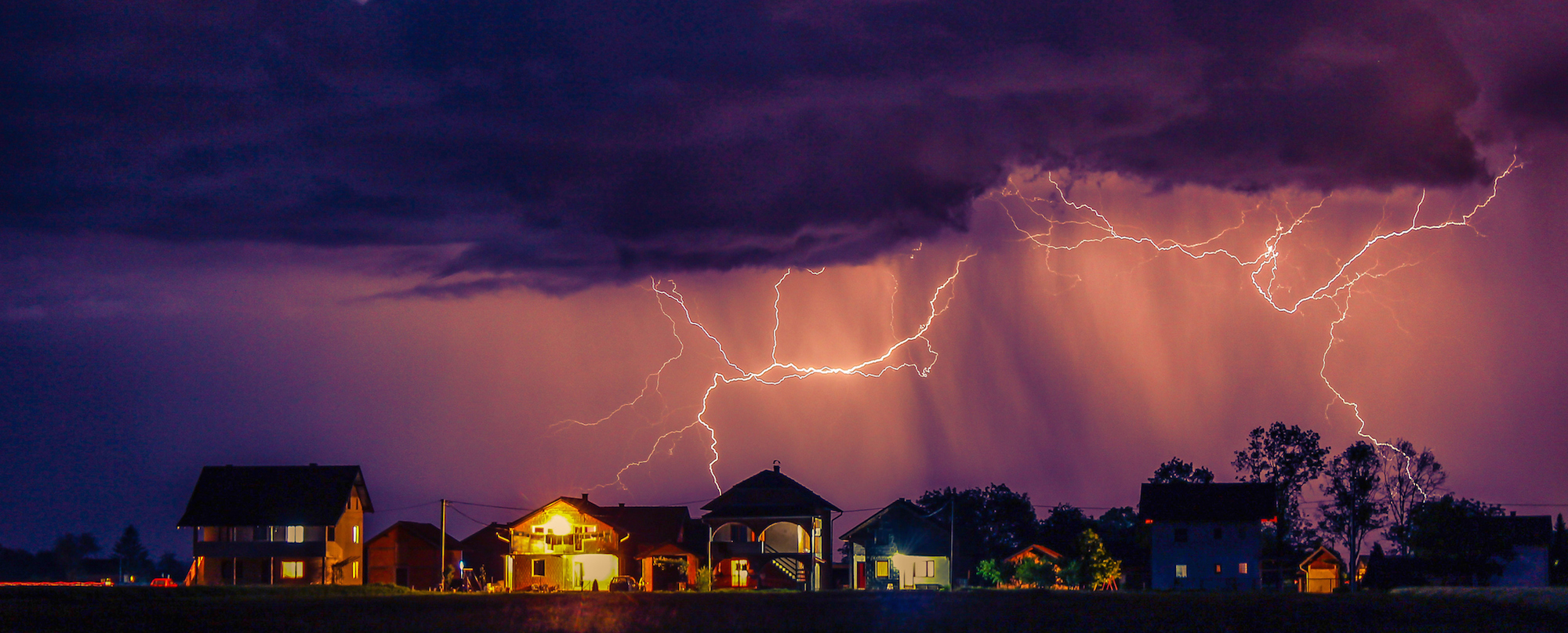
Severe weather warning – after the storm
December 5, 2017
December 2017 Member Matters
December 22, 2017By Harry Rosenthal, General Manager, Risk Management Services, Regis Mutual Management
I have to confess I have a taste for monster movies. Not all monster movies, just the ones about giant beasts dedicated to destroying any human urban environment encounter. King Kong, Godzilla, Jurassic Park and their peers enthralled me since childhood and now, as a risk professional, I can use the excuse that I find them attractive due to my interest in disaster management and recovery. These films are simply, deep research, with popcorn.
Of course, there may actually be lessons in disaster recovery from these Hollywood offerings, but usually, it’s a long bow. When the film, The Day After Tomorrow, came out in in 2004, it sparked a great deal of discussion in the scientific community about its plausibility and the risks associated with climate change. I recall it being mentioned in several lectures, and I would like to think that in 2016, when, for the first time, the world’s ability to produce green power has exceeded its capacity to produce in coal-fired power, that Hollywood had a small part to play in the achievement.
Recently a sequel to a lesser known monster movie was being filmed in my home community. The first film, Pacific Rim (2013), was memorable for two achievements. Firstly, it had the worst fake Australian accents ever uttered in a film with a budget over $US190 million, and secondly, supported my research as it featured not only giant monsters, but also giant robots. Pacific Rim 2 will be released in February 2018, and from the costumes used in my town, apparently the monsters get the upper hand, and there is more societal breakdown than usual. As most things do, it caused me to wonder about disaster planning and the management of societal breakdowns.
Forecasting Civil Unrest
In the risk registers of the 1980, when they first become popular, civil unrest or societal breakdown was an often a mentioned peril. Insurance policies of the day, frequently wrote them out in as exclusions, making them a 100% self-funded risk. This, of course was after the disruptive 60’s and ‘70’s, so it was not too hard to imagine it was on the minds of insurance and risk professionals.
In Australia today, it is difficult for us to envision a relevant scenario, where lawlessness descends on our communities and civil order breaks down. We are unused to facing a situation of widespread chaos. As a result, it is interesting to see that while we do plan extensively for large scale disasters, such as widespread bushfire, flooding, earthquake and other classic disaster film scenarios, less and less is civil unrest discussed as part of the plan. Particularly in Australia and New Zealand, such scenarios are hard to imagine, as we have recently seen extensive earthquakes in New Zealand, which were followed by remarkably limited examples of looting. My personal favourite was a case where a teen admitted to looting two frying pans and some baby formula from a train stranded due to the Kaikoura Earthquake. I further noted, the looters turned themselves in. A very low level of civil unrest in a disaster. Most know that NZ, residents are routinely told to keep at least three days of supplies available in their homes, as it is anticipated it will take civil authorities that long to establish contact and possibly provide relief. Guns and ammunition are not on the list of recommended supplies, even though the announcement sounds like a free pass for three days of anarchy and civil unrest. I am not personally upset with this low level of concern about civil unrest in our region, but as a risk professional, I do not encourage completely removing civil unrest from the planning scenarios of large scale events, even if we believe we are only risking a few used frying pans and some baby formula. If we have learned anything from the recent Brexit in the UK, the election of President Trump in the US, President Duterte in the Philippines and President Erdogan in Turkey, is that it is extremely difficult to know what people will do or what they want in the future. Looking back a few years ago, these current political realties were not anticipated. Perhaps our past metrics of social stability seem to be flawed, affecting our ability to predict political risks in the future.
If there is any lesson from the rise of these governments, I believe it is, “Nations which the data indicates to be thriving, happy and prosperous by standard metrics, actually can harbour deep-seated discontent in the form of nationalism, xenophobia and anti-globalism can show signs of civil stress.” For example, perhaps the greatest mystery are countries like the Netherlands, one of the most prosperous, low crime destinations on the planet. Their prisons are so empty that they rent prison cells out to other countries who have a surplus of prisoners. In spite of these positive financial and social metrics they are seriously flirting with disruptors such as nationalism, anti-Islam regulation and pulling out of the EU.
The Dutch example is far from unique, as we see in the United States today. While their Presidential politics take up a large percentage of media coverage, there is a view that civil unrest is an increasingly likely occurrence. For example, in the US, setting up extensive home stores of food and creating personal refuges in remote areas was formerly the hobby of fringe groups called survivalists, who believed society would experience widespread civil unrest in their lifetime and who wanted to create a self-sustaining, bolt-hole, for their families. Today. Such thoughts are not restricted to a small fringe groups, but are increasingly mainstream. In this group we can now include high tech firm millionaires in Silicon Valley. The New Yorker Magazine recently ran an article which summarises the results of a 2012 National Geographic survey of Americans which indicated 40% of Americans believe that stocking up on supplies or building a bomb shelter was a wiser investment than a 401(k) account. This is hardly a fringe sentiment. The article elaborates that many of the Silicon Valley and New York uber-rich are investing in secure apartments, some built in converted abandoned ballistic missile silos in the middle of the US. They are, of course, very luxurious and are well guarded and well stocked. Civil unrest “prepping” is not just for the fringe anymore. Maybe it should linger on our risk registers a little longer.
Does our global political risk analysis indicate the probability of large scale disaster events taking place which will not only cause a physical loss, but will also tear the fabric of society as well? How would we begin to treat such risks? While triggering events need not be a Godzilla remake or an eastern Ukraine civil was, but can also be a set of circumstances which somehow impacts a critical resource which large numbers of people need. Do we have plans to handle that surge in demand, when it is unexpectedly coming from everyone? If not, civil unrest is always society’s version of Plan B, in obtaining needed personal resources. It need not take place on a national or regional basis, as there are examples, we will explore in Part 2 of this article, which are far more localised, but still tugged at the ethical issues surrounding those in the disaster event.
In many disaster plans, such issues such as civil unrest are addressed as “other agencies’ problems”. In their plans are pages with titles such as, Police Take Control or Public Safety Agencies Respond, etc. In other words, the thinking, planning and response responsibilities are passed along to other agencies, for them to deal with. This might be appropriate in most situations, but like all forms of delegation, it is unwise to pass along 100% of the responsibility with 100% of the authority. In other words, if the welfare of the affected stakeholders is important to you in a disaster scenario, such as your customers, your residents, your patients, your students, your staff, your family, etc., you may want to be certain all responders have a shared understanding of what success and failure looks like in the response. In a disaster, this can be challenging.
My favourite example, while historic, regards one of the country’s largest man-made, non-military disasters, the wreck of the Batavia in the Abrolhos Islands, Western Australia in 1629. The Batavia was the largest ship at the time in the Dutch East India Company fleet. It had a crew and passenger list of 341 people, and as a result of a mutiny and shipwreck, a microcosm of civil disorder was created on these WA islands. While most of the passengers and crew were able to safety reach the shore after the shipwreck, which was partially caused by mutineers and party by the poor ability of mariners to establish longitude in those days, there was almost no water to be found on surrounding islands. As a result, the Captain and senior officers left the stranded party to seek rescue in the ship’s longboat. Sadly, the person put in charge was sympathetic to the cause of mutiny and as a result went on a killing spree of the survivors, which resulted in the murder of 110 men, women and children.
This story is a well-known part of Australian lore, and while to many it may seem like a history lesson, with no application in the 21st Century, I feel it can remind us of circumstance where civil disorder can suddenly bloom. The example shows us:
- Civil disorder incidents need not result from a single, widespread, catastrophic event, but can occur when a set of local conditions are out of kilter.
- It showed that poor decision making, in this case, who you put in charge, (a Batavia merchant named Cornelisz, for example), can lead to a set of circumstances which results in local chaos.
- The result of civil disturbances can leave a stain in the culture and legacy of a society for a long time. They have significant, long-term repercussions.
This is not say such unexpected events are beyond everyone’s imagination. The topic of emergency planning due to zombie apocalypse was entertainingly discussed recently in the Spanish Parliament, but not in a way which shed any useful light on effective disaster planning. We know, however, the costs associated with a civil disturbance are very high, therefore, it is wise to keep some of its elements in our emergency and disaster planning. Most of these skills we have clearly delegated to public safety authorities, and in no way, do I have diminished confidence in their ability to effectively respond to a crisis situation. But in cases where the disaster is large enough to effectively overload public safety officials, as we saw in New Zealand, or affect only isolated in groups where civil authorities are no longer present, as in the Batavia, the potential for civil unrest can exist. If unrecognised and untreated, it can grow in to an explosive scenario which would be difficult to anticipate.
In the next instalment of this article, I will address a key skill, which I feel should remain as a risk treatment in disaster plans, and not be 100% delegated to public safety authorities. Such skills, can be buried deep in the plans, but should exist to remind all of the potential for civil unrest.



